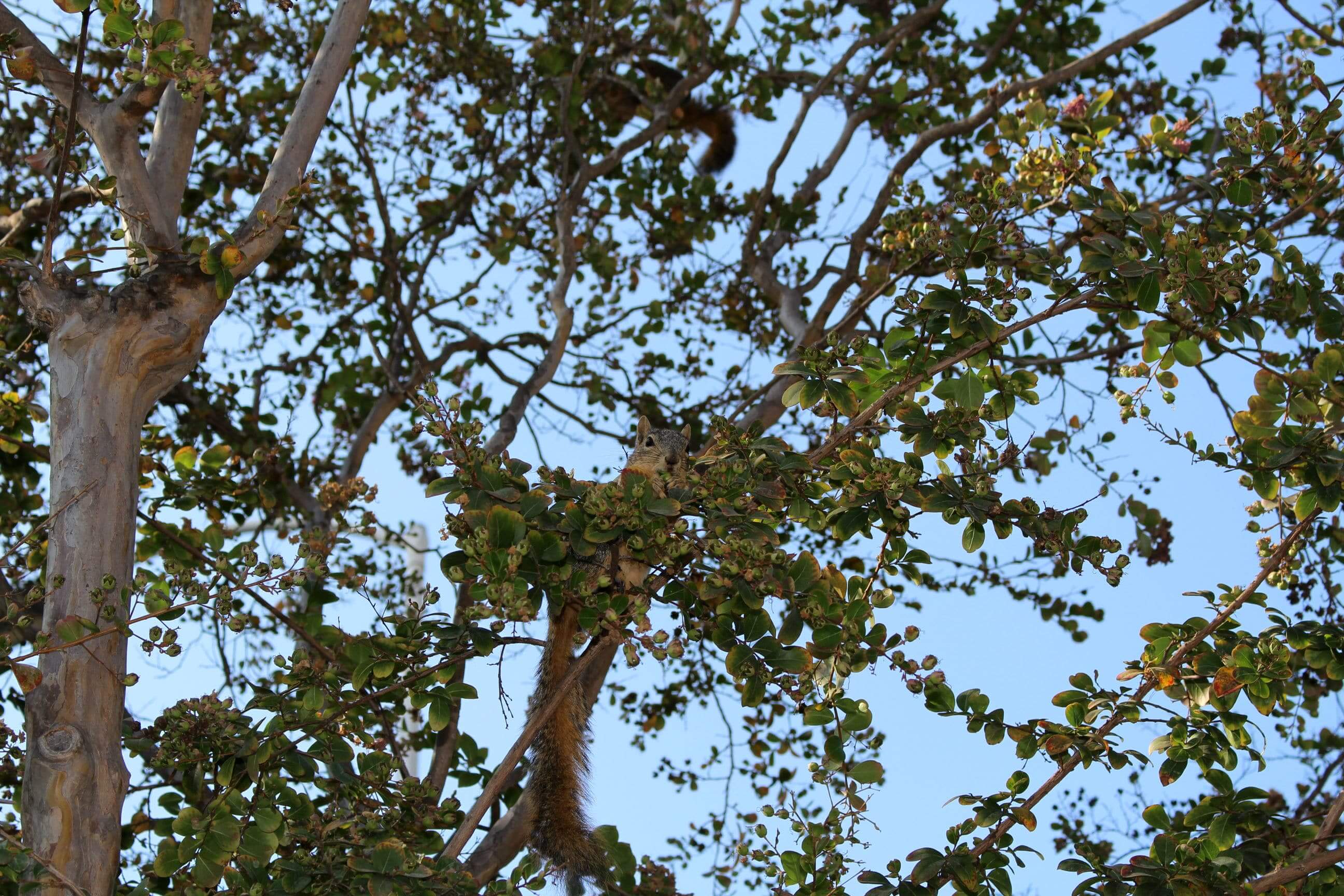
Occidental College sits squarely within a thoroughly urban setting, yet it engages with the natural world in a variety of ways. Nestled between Mount Fiji and the communities of Eagle Rock and Highland Park, Occidental is a nexus between the natural and urban. The beauty of the natural splendor is evident, but less so are the challenges and tensions that arise between humans and nature.
The coyote population in and around Occidental highlights this tension. Despite their stealth, coyotes leave a profound impact on the people within the school and surrounding community.
Roshni Katral-Adefowora (senior) has been working with the biology department to use camera traps — cameras paired with motion sensors that set off cameras to capture photos of local wildlife. According to Katral-Adefowora, the camera traps track the coyotes roaming the campus both night and day.
“There were a lot of coyotes [on our camera traps], and they came out at all times of day,” Katral-Adefowora said. “They’re opportunistic predators, so even though technically they would sleep during the day … they’ll go out whenever they can to find food.”
The coyotes do not limit themselves to Occidental, however. Members of the Eagle Rock Neighborhood Group, a Facebook group for community members in Eagle Rock, noted that coyotes factor into the daily life of the area.
According to Katral-Adefowora, coyotes do not normally present a threat to humans. However, many pets in the Eagle Rock area fare differently. Several members of the Eagle Rock Neighborhood Group noted in a post thread that they have lost pets to the coyotes.
According to community member Kevin Grace, the coyotes are a frequent sight and potential threat.
“I have lived in [Eagle Rock] most of my life,” Grace said via Facebook. “Coyotes have been here since I was doing paper routes as a 10–11-year-old. Our neighborhood cats have disappeared and/or been found mutilated over the years.”
According to Diego Zapata (senior), director of the Food, Energy and Sustainability Team (FEAST), and Alma Olavarria Gallegos (senior), an interpretive garden manager at FEAST, the coyotes threaten the chickens housed at the on-campus FEAST Garden.
“The coyotes kill our chickens a lot [at FEAST],” Olavarria Gallegos said. “And you can tell, like if we don’t keep [the chickens] inside or keep an eye on them, then the coyotes will eat the chickens.”

Despite the danger of the coyotes, Zapata acknowledged that they form a natural part of the greater ecosystem around Occidental.
“That’s just part of living with nature, you know,” Zapata said. “There are practical implications to supporting our native fauna, because otherwise they will depend on and be more of a nuisance for us here.”
Grace echoed Zapata’s comments.
“Sadly, our smaller pets have been hit the hardest,” Grace said. “Other than that, the coyotes are an integral part of the fabric of most foothill-adjacent communities.”
Occidental’s trees face their own challenges and issues. According to Brianna Baker (senior), the campus features a wide variety of trees, but the coast live oak and eucalyptus feature most prominently. For her biology senior project, Baker studied the coast live oaks and the fungal infections that contribute to problems with the oaks.
“My project was an investigation of the relationship between water availability and coast live oak resistance to the Polyphagous Shot Hole Borer (PSHB), a boring beetle,” Baker said. “With beetle-born fungal infections becoming a threat to coast live oak, I want to do my part to help to understand the disease and its effects on them to ensure that they continue to be a fixture on campus and throughout the rest of Southern California.”
Not all threats originate from the beetles’ however; eucalyptus trees can pose a threat to plants in their proximity. According to Zapata and Olavarria Gallegos, the trees release chemicals into their immediate vicinities that suppress the growth of other plants, a process known as allelopathy.
Zapata said that the eucalyptus trees present a dilemma for the Occidental community. While the invasive trees contribute to Occidental’s aesthetic value, they also present a problem to the school’s native plants.
“As we start considering our ecological impact on the local community, we should start really considering the trade-off between continuing to plant [eucalyptus trees] and not considering our native plant species,” Zapata said.
The plant life of Occidental presents a struggle between native and invasive species. According to Zapata, the presence of invasive plants is especially prominent on Mount Fiji, where FEAST is currently making efforts to reintroduce native flora.
“Essentially all of Fiji that isn’t a part of our restoration site is, for the most part, invasive,” Zapata said. “There are invasive annual grasses, and so the issue that that presents is that invasive plants are a lot more competitive than native plants are.”
According to Zapata and Olavarria Gallegos, the grasses can also contribute to fires like the Dec. 14, 2017 fire on Mount Fiji. By outcompeting and killing the native plants, the invasive grasses create the potential for fires when combined with Southern California’s arid climate.
“It creates this huge issue because there’s a lot of tinder and a lot of chances for fire,” Zapata said. “Even though our native ecosystems are adapted to fire, they’re not adapted to the fire regime that is currently operating at [Mount Fiji].”
Zapata added that FEAST’s efforts to restore the natural flora to Mount Fiji represent an ongoing movement.
“What we’re doing is removing as much of the invasive plants as we can. It is a very gradual process, and even once we restore all of Fiji Hill, there will still be invasive plants that we will have to manage and keep those populations down. But it’s a labor of love, you know?” Zapata said.
![]()


































